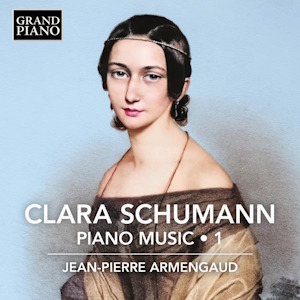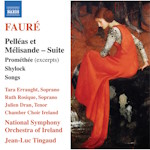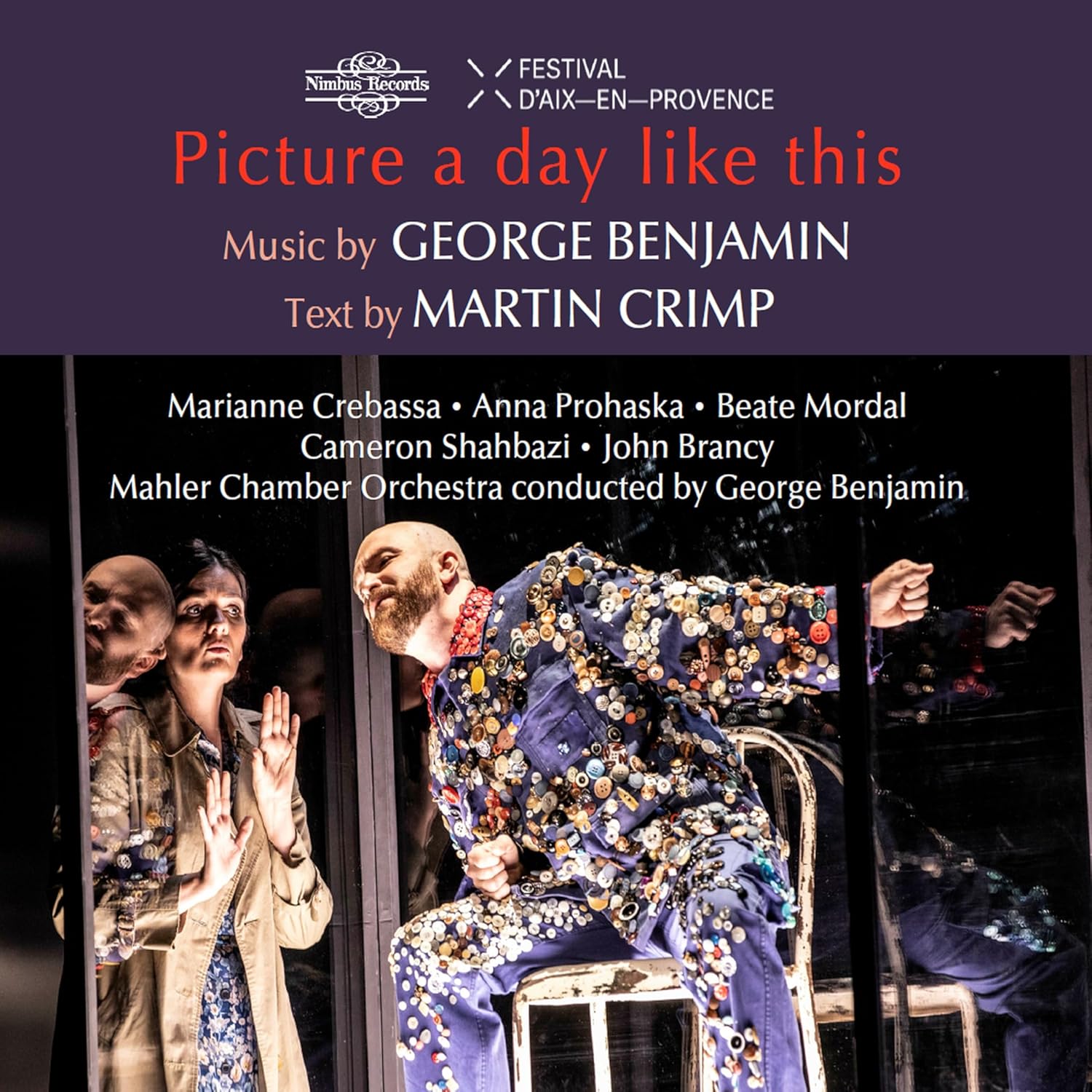
Clara Schumann (1819-1896)
Piano Music 1
Jean-Pierre Armengaud (piano)
rec. 2023 Jean-Pierre Armengaud’s home studio, Malakoff, Hauts-de-Seine, France
Grand Piano GP930 [74]
How sad to read Clara Schumann’s dismissal of her own talent at the head of the booklet notes – a woman shouldn’t attempt to compose. Not one has been able to do so yet, so why should I be an exception? It is hard to understand the thoughts and opinions of someone so steeped in a culture that formed such an idea though, for all the progress we have made since she wrote these words in her diary in 1839, an element of that prejudice can still be found today. Thankfully evidence to the contrary is becoming more and more prevalent and the glorious opening Romance on this disc should dispel any doubts about the quality or abilities of female composers.
Clara’s first tuition was with her father Friedrich Wieck and despite his later opposition to her relationship with Robert it is him who Clara would thank for the incredible pianistic grounding that made her one of the most formidable pianists of the 19th century. Her legacy lived on after her death through pupils that included Adalina de Lara, Mathilde Verne, teacher of Solomon, and Carl Friedberg whose pupils were as wide ranging as Malcolm Frager and Nina Simone. As a composer she was less known though admired by leading musicians of the age; Robert encouraged her but her composition time was limited as Robert could not work whilst she played, a fact he regretfully acknowledged I’m often perturbed to think how many wonderful ideas are lost because she doesn’t have time to develop them. Over a period of 25 years she wrote a decent body of works then all but ceased composing after her husband’s death in 1856; the odd piece written just before her death and transcriptions and cadenzas for concertos of Mozart and Beethoven were all that she wrote.
The earliest pieces here are the three Romances op.11, dedicated to Robert and a move away from the flashier music that fitted alongside the repertoire she played in her early years as a virtuoso pianist. They all show a gift for keyboard layout that she had developed early in her career and an adventurous sense of harmony. The first is highly decorated by rich laden arpeggios while the second features a melody over the kind of syncopated accompaniment that can be heard in works from Mendelssohn to Massenet. The final romance is a fluent waltz that owes something to Chopin’s waltzes and even more so his mazurkas. The booklet notes that Robert admitted that his own romances op.28 were written in response to Clara’s op.11 set, doubtless why she felt empowered to follow up with her op.21 romances. These appeared fifteen years later and originally opened with the Romanze in A minor, also recorded here and which was first published in 1891 by London’s The Girl’s Own Paper. It has much in common with the A minor romance that ultimately became op.21 no.1 in 1855, that feeling of melancholia that has a lyrical but still somewhat bittersweet central section. Beautiful though it is the later A minor romance is more distinctive and has rightfully become quite popular on disc. It’s companions are a short and charming song without words in staccato chords and a waltz with a sinuous accompanying figure throughout. The final Romance on this disc and the last piano piece that Clara wrote, is the Romance in B minor. It is an elegiac song without words that follows a similar pattern to her other romances, the heartfelt minor section that opens and closes the work with a central section that offers relief and consolation. The melancholy mood here is only too easy to understand considering the events of its composition date,1856, that most devastating year for the still relatively young Clara. The Variations on a theme by Robert Schumann are from three years earlier though life cannot have been any easier then and this deeply personal music is a loving homage to her husband, based as they are on the early albumblatt published as the fourth of his Bunte Blätter. I have observed before that for me they belong to the same sound world as Mendelssohn’s glorious Variations serieuses and I can only repeat the description I wrote in my review of Benjamin Grosvenor’s wonderful recording (DECCA CLASSICS 4853945 review); The variations often alternate lyrical and virtuosic; a beautifully chromatic third variation is followed by a variation in running triplets with the melody lying in the left hand and a gentle canon is followed by a vigorous octave variation. Variation seven is a marvellously woven tapestry of decoration over the theme and after a lovely change from the minor to major key Schumann brings the variations to a tranquil close.
Robert and Clara had made a study of Bach’s Well-Tempered Clavier and four preludes and fugues are Clara’s response to Bach’s music. The preludes from op.16 nos.1 and 2 could easily be short character pieces along the lines of the romances while the third and that of the separate Prelude and fugue in F sharp minor favour contrapuntal lines more in keeping with their connection to the skilfully written fugues; the third especially links the themes of both prelude and fugue. The scherzo in C minor could be a sonata movement and has a driving rhythm and earnestness that belie its title; it is a good example of Clara’s virtuoso writing without the frivolousness that many minor contemporaries would display. Finally Armengaud includes one of Clara’s many transcriptions of her husband’s songs. These were written in 1873 and published as 30 Mélodies de Robert Schumann transcrites pour piano par Clara Schumann. Brahms had suggested that she might want to write them in a more obviously piano solo style, creating new pieces out of Robert’s originals but Clara maintained that it would mostly be amateurs who would be playing them and produced these relatively straightforward transcriptions, far removed from Liszt’s more flamboyant creations. Schumann’s Er ist’s is an engaging setting of Mörike’s ode to spring and Clara keeps that bounce and simplicity in her setting.
This is a decent start to what will be all of Clara’s solo piano works and, with the inclusion of Er ist’s presumably her transcriptions as well. The works here are predominantly lyrical and Armengaud is clearly in love with the project and the music. In his personal note printed in the booklet he writes this project underpins, without expressive showboating’, a great desire for sincere introspection, devoid of romantic theatricality in which conquering virtuosity (surely a masculine habit) is ceded to personal contemplation. I can understand that and the way that links to Clara’s own ideals as a pianist which brought her into disagreement with someone like Liszt but I think Clara would still appreciate a bit more virtuosity and flexibility of phrasing. It is a perfectly agreeable and enjoyable recital as a whole and there is a lot of good playing but individually I would seek other pianists; Grosvenor certainly for the Variations or indeed Sara Costa on Da Vinci Classics COO286 review, Antonio Oyarzabal for the op.21 romances (IBS Classical IBS52021 review) and Christina Ortiz in her recital on Carlton Classics which has more fluid and supple playing.
Rob Challinor
Buying this recording via a link below generates revenue for MWI, which helps the site remain free



Contents
Three Romances Op.21 (1853-55)
Three Preludes and Fugues Op.16 (1845)
Variations on a theme by Robert Schumann Op.20 (1853)
Three Romances Op.11 (1838-39)
Scherzo No.2 in C minor Op.14 (1841)
Romance in A minor WoO.28 (1853)
Prelude and Fugue in F sharp minor (1845)
Romance in B minor (1856)
Robert Schumann (1810-1856) Er ist’s – Lieder-Album für die Jugend Op.79 No.23 (1849, arr. Clara Schumann)

















